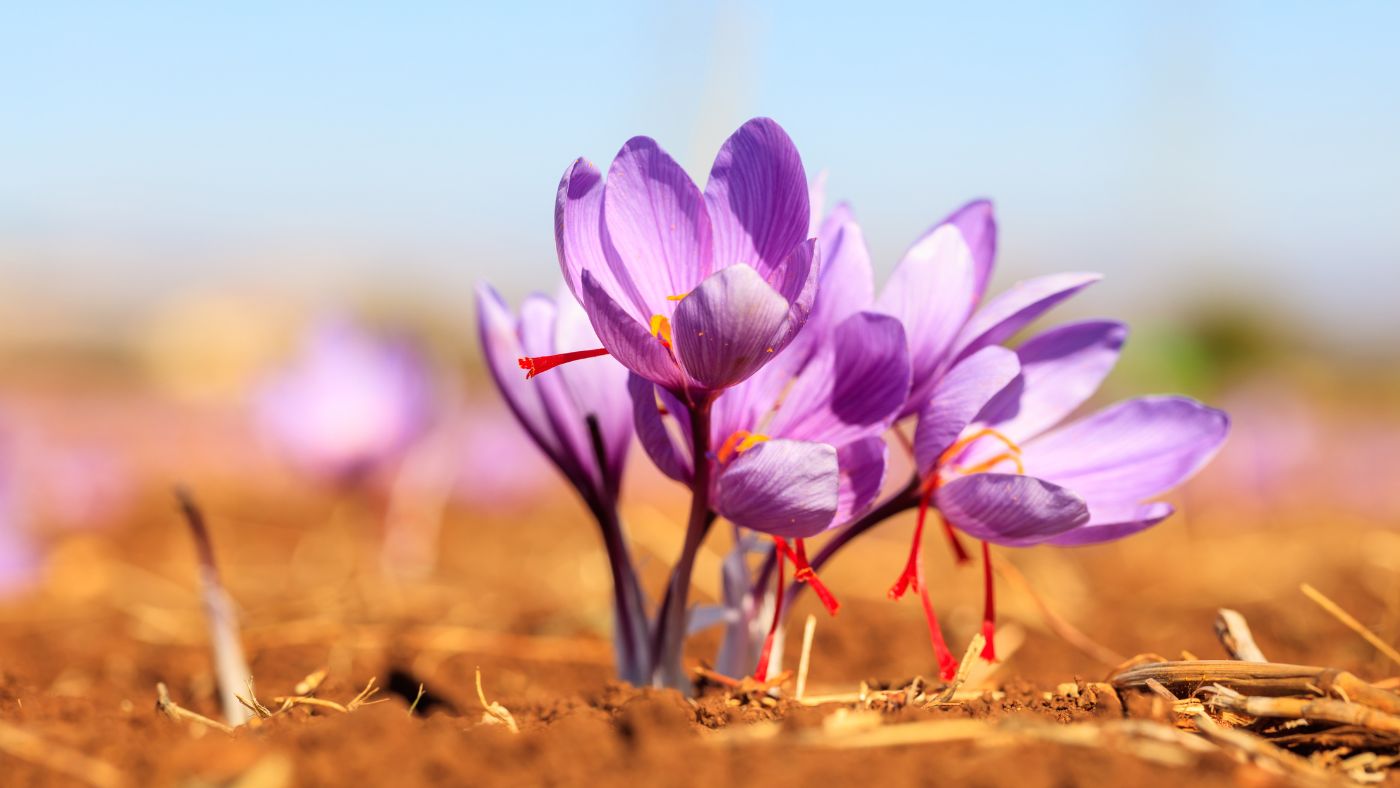Offer
Provide additional details about the offer you're running.

Saffron, a luxurious and highly sought-after spice, has been revered for its unique properties for centuries. Its deep golden hue, unparalleled taste, and distinctive aroma make it a culinary gem that enhances dishes around the world. But what truly sets saffron apart from other spices is the intricate, labor-intensive process of cultivation and hand-harvesting.
In this blog post, we will delve into the fascinating world of saffron production, exploring its origins, the Crocus sativus flower, the meticulous harvest process, and the remarkable dedication and skill required to produce this extraordinary spice.
Saffron's rich history dates back over 3,500 years, with its origins rooted in ancient Persia (modern-day Iran). Revered for its culinary, medicinal, and even spiritual properties, saffron has played a significant role in various cultures throughout history.
Cleopatra, the famed Egyptian queen, is said to have used saffron-infused baths for its aphrodisiac properties, while ancient Greeks and Romans prized saffron for its fragrance and used it as a natural dye.
Today, saffron continues to be a highly valued commodity due to its rarity, unique qualities, and the laborious process of cultivation.
Saffron is derived from the stigmas of the Crocus sativus flower, an elegant lilac bloom with three vivid red stigmas at its center. These stigmas, commonly referred to as saffron threads, are responsible for the spice's distinctive color, aroma, and flavor.
The Crocus sativus flower blooms only once a year, for approximately two weeks during the autumn season. This brief window of opportunity makes saffron cultivation a complex endeavor requiring precise timing and optimal conditions.
The flowers thrive in well-drained, nutrient-rich soil and flourish in regions with hot, dry summers and cold, wet winters, such as Iran, Spain, and India.
The process of harvesting saffron is a true testament to the dedication and skill of the farmers involved. Each Crocus sativus flower must be handpicked early in the morning, just as the blossoms begin to open.
Timing is of the utmost importance, as sunlight can rapidly diminish the saffron's potency. With extreme care, farmers delicately separate the fragile stigmas from the remainder of the flower, ensuring that the valuable threads remain intact.
Once the stigmas have been separated, they must be dried to produce the final saffron product. This is typically done by placing the stigmas on a mesh screen or tray in a well-ventilated area, away from direct sunlight.
The drying process can take anywhere from a few hours to several days, depending on the specific drying method used and the ambient conditions. The dried stigmas are then carefully packaged and stored, ready to be sold and used in various culinary applications.
The scale of saffron production is truly astonishing. Approximately 75,000 Crocus sativus flowers are required to yield just one pound of saffron.
This extensive amount of manual labor, combined with the limited availability of the flowers, is the primary reason saffron has earned its title as the world's most expensive spice.
To put this into perspective, the labor involved in harvesting a single pound of saffron is equivalent to the time and effort required to handpick nearly 170,000 rose petals.
Saffron has earned a well-deserved reputation as a culinary treasure due to its unmatched taste, vivid color, and unique aroma. The spice has found its way into numerous traditional and contemporary dishes across a variety of cuisines, elevating even the simplest recipes into culinary masterpieces.
In Indian cuisine, saffron is a key ingredient in the renowned biryani, a rice dish layered with meat or vegetables, and garnished with saffron-infused milk for added flavor and color.
In Spanish cuisine, saffron is an essential component of the classic paella, imparting its distinct golden hue and flavor to the rice. Italian risotto alla Milanese, a creamy rice dish from Milan, also features saffron as a star ingredient, lending its characteristic color and aroma to the dish.
Beyond these traditional dishes, saffron has also found its way into contemporary gourmet creations, from saffron-infused ice creams and panna cottas to inventive cocktails and even chocolate truffles. Its versatility and unparalleled qualities make it a coveted ingredient in the world of gastronomy.
The next time you enjoy a saffron-infused dish or use the spice in your own culinary creations, take a moment to appreciate the remarkable dedication, skill, and passion involved in cultivating this extraordinary spice. From the thousands of Crocus sativus flowers meticulously handpicked to the careful drying and storage process, each step of saffron production is a testament to the art and craft of those who dedicate their lives to producing the world's most expensive spice.
The fascinating world of saffron cultivation and harvest is one of dedication, skill, and an unwavering passion for preserving the unique qualities of this rare and valuable spice.
With its roots firmly planted in ancient history, saffron continues to captivate the modern world with its vivid color, unparalleled taste, and distinctive aroma.
As we savor the rich flavors of saffron-infused dishes, let us also celebrate the tireless efforts of the farmers who bring this culinary gem to our tables, enriching our palates and connecting us with the fascinating history of the world's most expensive spice.